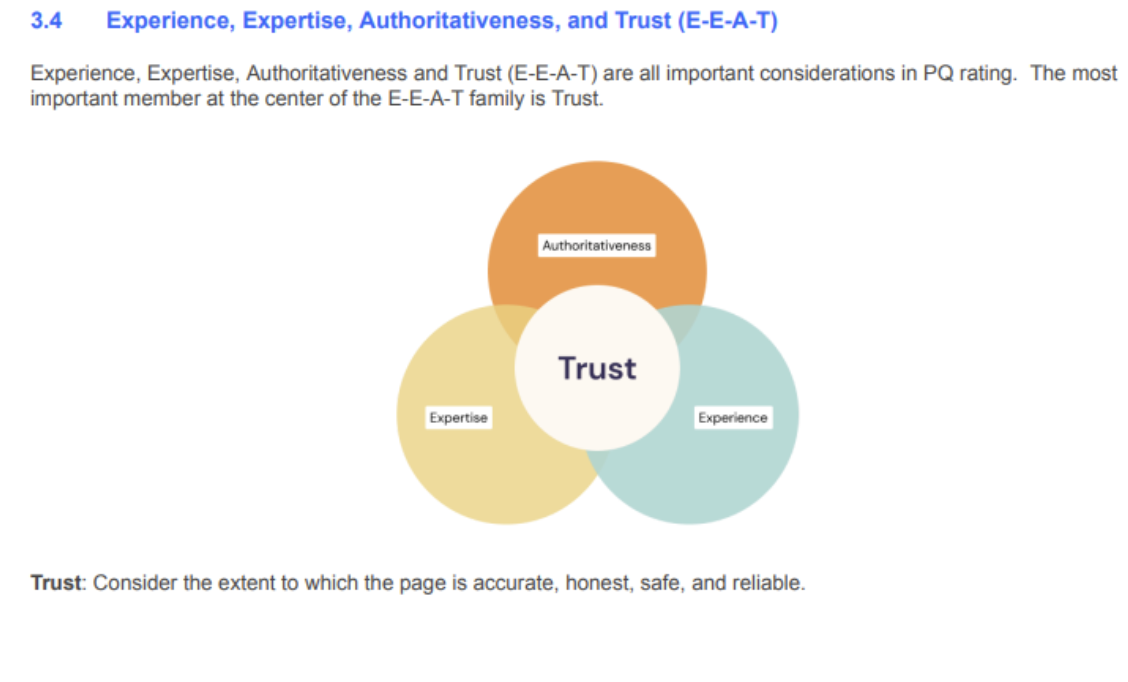Mastering Content Marketing in 2023: A New Era with Familiar Principals
With the advent of AI over the last 12 months, the content marketing world has had a bit of an identity crisis. Will AI replace content writers all together? How much should we rely on AI for our content marketing efforts? What AI best practices should we be following? How will Google and other search engines adapt to and treat AI content? As marketers we have been ruminating over these questions since ChatGPT was officially released late last year. As with most things in digital, particularly search, we had to wait it out and let the dust settle. With the benefit of hindsight, and a few algorithm updates under our belts, we can now confidently say that the old adage “the more things change, the more they stay the same” has never been more true.

Google Core Update March 2023
It’s no surprise that Google’s major algorithm update for 2023 seemed to be in a direct response to the sudden surge in AI generated content to enter the search sphere in the first quarter of the year. The update began on March 15 and completed rollout on March 28, 2023. It targeted all forms of content globally, with the major intent being to reward the highest quality content on the web. Google pointed to E-E-A-T (Experience, Expertise, Authoritativeness, and Trustworthiness), a list of qualifying parameters that the search giant originally introduced back in 2014. They technically introduced E-A-T (Expertise, Authoritativeness, and Trustworthiness) in 2014 and rolled out the added E (Experience) in December of 2022. Also released that same month was Google’s first Search Quality Rater Guidelines document. While the Quality Rater Guidelines outlines what is considered quality, it also informs us what Google considers low quality page ratings and more. Thus reminding us that they very much still value content that delivers on these elements.

Google’s Official Stance on AI
It’s undeniable that the adaptation of AI within the business community has been staggering. In fact according to Forbes Advisor, one in three businesses plan to use ChatGPT to create website content, while 44% aim to generate content in multiple languages.[1]
With all of that AI content being produced, how is the Google index responding? They’re staying the course with E-E-A-T. In fact they stated on the Google Development site, “however content is produced, those seeking success in Google Search should be looking to produce original, high-quality, people-first content demonstrating qualities E-E-A-T.” They went on to say, “if you see AI as an essential way to help you produce content that is helpful and original, it might be useful to consider. If you see AI as an inexpensive, easy way to game search engine rankings, then no.” [2]
It’s that simple, stick to the guidelines Google has laid out for us for years now and you’ll be rewarded with key positioning in SERPs. So what does this mean for marketers in 2023 as we plan for 2024? Take advantage of AI! Don’t blindly depend on it but use the power of ChatGPT and other AI tools to create smarter, more intriguing, people-first content.
What Now?
We have established that AI is here to stay, and even Google is encouraging us to tap into it for content creation as long as we’re delivering a high quality output. As you plan for the rest of 2023 and into next year, we encourage you to not only lean on AI but also incorporate many of the best practices that content strategists have been touting of late.
Define Your Goals & Objectives
Identify Measurable Goals
Before you begin outlining your plan, it’s critical to define the metrics you will be using to measure your success. We typically lean on impressions and clicks (via Search Console) and completed conversions (via Google Analytics). Taking a few minutes to establish this will be critical to your ability to substantiate your content efforts in the future.
Revisit and Define your Target Audience
If you haven’t done this in awhile, now is the time to define your target audience. If you already have yours clearly defined, you’re a step ahead. Keep your audience in mind at every phase of the planning and writing process. If you lean on a content writer, be sure they have a clear understanding of your audience as well.
Define CTA’s
Having a clear CTA, or two that you plan to include in your content is ideal. This consistency will help to increase the conversion rate of your content over time. Whether you offer ‘free estimates’ or ‘instant online quotes,’ make sure all of your content not only accounts for E-E-A-T but it also includes a closing clear CTA.
AI Tip: Use smart prompts to further flush each of these out.
Revisit the Past
According to industry experts, including Search Engine Land, you should be spending 50% of your time on SEO refreshing old content.[3] That’s right! As you plan your content, the good news is you don’t have to reinvent the wheel. You can spend time revisiting old content and giving it a refresh for 2023 and beyond.
Where do you start? We always recommend taking a look at your Search Console data. This is a quick way to determine which pieces of your content Google is favoring, which are driving clicks and which are falling short. We encourage you to complete the exercise regularly. Not only will it help you identify topic clusters that are working and you can expand upon, but you can use it to identify stale content that’s taking up crawl budget and is doing nothing for you. Metrics to focus on in Search Console:
Impressions
This is a quick indicator that Google finds your content valuable. If your piece is being served up thousands of times a month, it’s time to take notice. What is unique about this piece? What elements can you take from it and repeat in a new piece or incorporate as you refresh existing content? This invaluable information can help you plan a content strategy that will help you reach your goals in record time.
Clicks
All of those impressions do you no good if people aren’t clicking through to your content. What pieces are getting clicks from the SERPs? Which aren’t? In the case that you’re getting thousands of impressions and few or no clicks, it’s time to consider how you can improve your meta titles and descriptions to increase your Click Through Rate (CTR)!
Search Terms
Though you may have painstakingly selected a keyword for a given piece of content, it is always interesting to see what terms Google ultimately decides to serve your content for in the SERPs. Taking a look at the keywords you’re getting impressions on can give you ideas for ways to refresh your content or spark ideas for new pieces that speak directly to terms that weren’t otherwise on your radar. This data can be a content planning goldmine!
As you dive into your existing content, chances are you will find strong examples of E-E-A-T at work. How did you demonstrate your experience, expertise, authoritativeness and trustworthiness? How can you do this even better in the future? Once you’ve done your homework, identified pieces to refresh, pieces to remove and come up with ideas for fresh topics, you’re ready to begin planning!
AI Tip: Ask AI how to further improve upon your strongest pieces of content. By using long detailed prompts, AI can provide some incredible insight that is unique to your content strategy.
Research
Keyword research and content planning is an ongoing process. As you prepare to outline your next round of content, it’s critical to look at the current search landscape. What are your competitors’ strongest pieces? What are your customers’ biggest pain points at the moment? Are there current events impacting your industry such as supply chain shortages? Are there weather events that make your services more or less desirable at the moment? What is Google currently favoring at the top of the SERPs? These can all be fodder for high quality content that truly hits it out of the park with E-E-A-T.
Plan, Plan & Plan Some More
Like with any type of marketing, methodical planning is the key to success with content marketing. Being prepared will give you a leg up when business picks up.
Outline a Marketing Calendar
Now that you’ve got all of these great old and new content topics to cover, it’s time to define when they will be written, published and shared on your social channels. For most of us, having a visual representation of the work ahead lays the groundwork for successful execution. Be sure to include a mix of media (blogs, articles, press releases, video, social posts, gated content, podcasts, ads, emails, user generated content, etc.).
Get to Work
Now it’s time to get to work on all of that brilliant person-first content that Google is looking for. With the data to back it up, you’re ready to start winning the search race, one step at a time with a little help from AI.
AI Tip: Ask AI to help you outline each piece. Include long prompts with information about your audience and CTA and all of the information you plan to share in the piece. And don’t forget to ask AI what you may have missed.
Analyze, Refine and Repeat
Just like we did when we revisited the past earlier, set a regular schedule for when you will look at your metrics and refine your content calendar based upon what’s working and what’s not. Use this as an ongoing opportunity to identify pieces of content to update and those to remove from your site altogether.
There you have it. By following these steps, tapping into AI, and keeping E-E-A-T in mind, you will be well on your way to success with your content marketing strategy in 2023 and beyond.
Did we miss anything? What best practices are you using at the moment to stand out in your space? Please share your comments below!
Ready to learn how a content marketing strategy can give you a leg up with your sales and marketing efforts? Contact us today! Discover how our full service marketing and/or coaching services are helping contractors around the globe dominate the SERPs in their local markets. Let’s talk!

- Forbes Advisor. How Businesses Are Using Artificial Intelligence In 2023.
- Google Search Central. Google Search’s guidance about AI-generated content.
- Search Engine Land. Creating new content vs. optimizing old webpages: Which is better for SEO?
Tagged:




